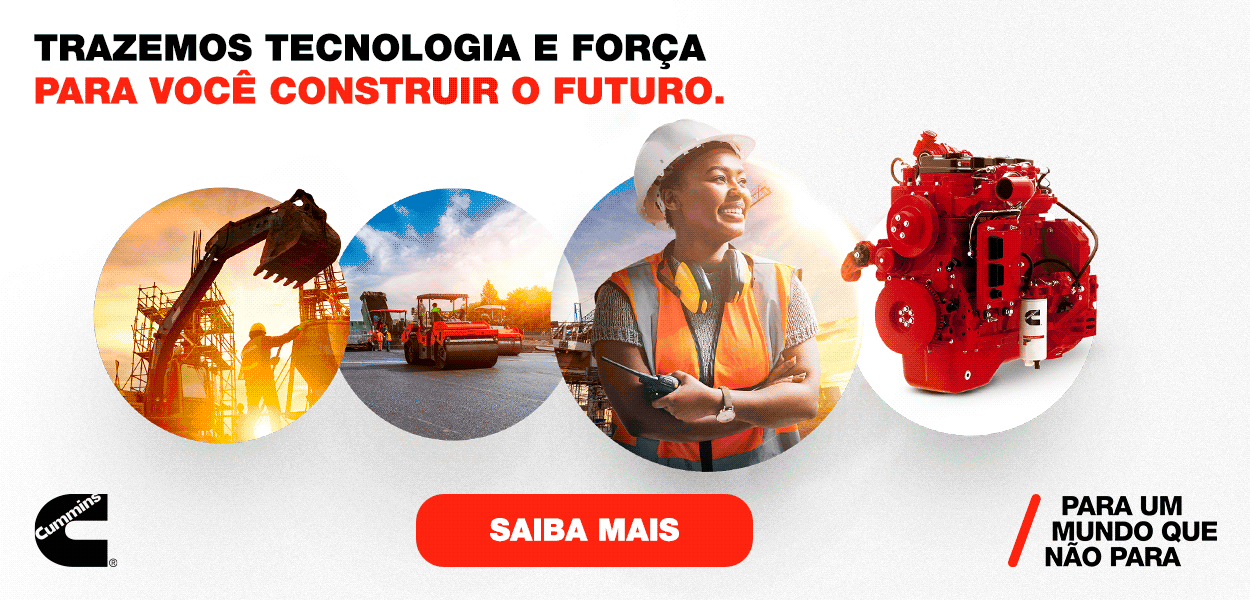Heavyweights in action
Manufacturers use different definitions to establish what is “large size” in this family, but all of them include indelible features for mining works
Mining is an activity of high-scale works, including the need of loading and transport materials of different shapes, sizes and densities, in high-temperature environments with high quantities of suspended solids and with different objects on the soil. These conditions demand the use of rugged equipment with high resistance and load capacity to handle the exploited volumes and to make the activity economically feasible. Among these machines are the high-capacity loaders, with operating weight above 20 t, bucket capacity of 3 cu.mt. or above and loading capacity above 6 t.
In fact, the configurations of equipment considered of large size in this family vary from one manufacturer to another. From Case CE, for example, specifications of produced loaders start from 250 hp of net engine power and 24 tons of operating weight. “In Brazil we make available the model 1021F in this configuration”, says Pablo Sales, company’s expert in loaders. “It is a machine with maximum output of 296 hp (221 kw), operating weight of 24.3 t, standard bucket of 4.1 cu.mt. and operating load of 7.9 t.”
For Liebherr, in turn, machines considered of large size have standard bucket above 3.2 cu.mt. “This way, machines classified as large size in Brazil are models that start from the series L556, which has standard bucket of 3.5 cu.mt. and tipping load of 17.6 t”, explains Pedro Gaspar, product manager of loaders from Liebherr Brasil. “In addition to this model, we produce another large-size model, the L580, with standard bucket of 5 cu.mt. and tipping load of 18 t”.
In the case of Volvo CE, the models that are in the category are those with power output of 300 hp or more, operating weight of 25 t and bucket of 3.4 cu.mt. “We have five models of large-size loaders: E150H, 1180H, 220H, 250H and 350F”, informs Boris Sanchez, application manager of the company. “From these models, the last one has the higher power (540 hp) and bucket of 6.4 cu.mt.”
To increase even more the concept mess, New Holland uses a slightly different definition. “In loaders, large size includes equipment with gross power above 227 hp, operating weight above 20 t and load capacity above 6 t”, explains Ésio Dinis, product marketing expert from the company. “In this category, our portfolio includes the machines W230D, W270D and W300C.”
STRENGTH
In fact, all these large-size ranges may be used in mining operations, quarries and sandpits, normally for on-yard material handling. This occurs because they are rugged equipment, built to allow maximum productivity and availability even in the most severe operations.
In mining works, the more appropriate sizes and configurations depend on a series of factors. It is important to consider the material that will be handled, the work that will be performed by the machine, operating restrictions, yard conditions, among others.
Gaspar, from Liebherr, tells a simple example to specify tires and buckets. “If a loader model L580 will load a truck with gravel in a regular yard with no objects that may cut the tires, it may be configured with L3 tires and a standard bucket of 5 cu.mt. with straight edge and appropriate wear plates”, says him. “If the same machine will operate in a rock bench, handling ‘matacos’, we recommend the use of a bucket of 4 cu.mt. for rock with “V” edge and L5 tires.”
Sales, from Case CE, adds that equipment configuration always has to be based on the application and restrictions of the work environment, such as temperature, type of soil and occurrence of suspending solids, for example. “Thinking this way, loaders of our brand are offered with a basic configuration that includes closed cab with air conditioning and ROPS/FOPS certification”, tells him, talking about the safety feature that protects the operator in case of rollover or fall of objects on the machine. In addition, they have a pre-filter of air in the engine, for filtering suspended soils—ensuring higher quality in the admission of air—and a cab cushioning system.”

Av. Francisco Matarazzo, 404 Cj. 701/703 Água Branca - CEP 05001-000 São Paulo/SP
Telefone (11) 3662-4159
© Sobratema. A reprodução do conteúdo total ou parcial é autorizada, desde que citada a fonte. Política de privacidade














